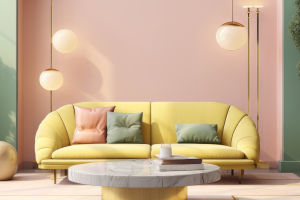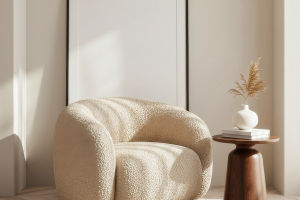When it comes to interior design, the minimalist style is undoubtedly one of the most popular choices right now. Its clean lines and spacious layouts are loved by many.
Whether you're designing a new home or renovating an old one, minimalist design brings a sense of calm and order. However, achieving the perfect balance between functionality and beauty in this style can be a challenge.
As Lykkers, we know that it's all about creating spaces that are both practical and aesthetically pleasing. So, how can we strike that balance?
The Characteristics of Minimalist Style
Minimalist design focuses on making the most of the space available. It often uses an open-plan layout, where less is more. By reducing unnecessary decor and furniture, we create an environment that feels spacious and comfortable.
Key features of minimalist design include clean lines, neutral colors, pure materials, and an emphasis on functionality. These elements not only make the space visually appealing but also enhance the way we interact with our environment. In minimalist design, we get both a sense of beauty and practicality.
Functional vs. Aesthetic: The Struggle
One of the biggest challenges we face when embracing minimalist design is balancing functionality with aesthetics. On one hand, we want furniture and decor to serve a practical purpose, making daily life easier and more comfortable.
On the other hand, we want the space to look beautiful, harmonious, and artistic, often focusing on form, color, and texture. Finding the middle ground between these two demands is key to creating a minimalist space that works well and looks great.
Smart Space Layout
A smart space layout is the foundation for balancing functionality and aesthetics in minimalist design. When planning, we start by considering the size of the room and the way we plan to use the space. Open spaces like combining the kitchen and living room are a great way to make the most of available space. This also keeps the flow of the design smooth and visually appealing.
Multi-functional furniture, such as foldable dining tables or sofa beds, helps keep things simple while also maximizing the use of space. These solutions not only help us maintain a minimalist look but also improve the practical use of the area.
Color Choices: The Key to Simplicity
When it comes to color, minimalist design often sticks to neutral tones like white, gray, and beige. These colors help create a sense of openness and calm, making the space feel larger and more serene. To add life and personality to the space, we can incorporate pops of color through accessories like cushions or artwork. These small touches can elevate the space, adding vibrancy without overwhelming the simplicity of the design.
Choosing Materials
Material selection is another crucial element in minimalist design. Natural materials such as wood, stone, and metal are commonly used because they not only look beautiful but also offer durability and practicality.
For example, using hardwood floors, stone wall accents, or metal light fixtures creates a clean and simple look while enhancing the longevity and maintenance of the space. By choosing quality materials, we achieve both aesthetic appeal and functional value.
Artistic Decor in Minimalism
Minimalism doesn't mean a lack of decoration. While the style focuses on simplicity, it still leaves room for artistic touches that make the space feel more personal and interesting.
Art pieces, such as abstract paintings or modern sculptures, can add character to a minimalist room. Similarly, choosing unique vases or decorative items can contribute to the overall vibe of the space. The key is to select decor that complements the overall color scheme and design, ensuring visual harmony.
The Importance of Lighting
Lighting plays a vital role in creating the right ambiance in a minimalist space. The right lighting design can enhance the atmosphere and add depth to the room. In minimalist design, we typically opt for simple lighting fixtures like pendant lights, floor lamps, or wall sconces.
By combining different light sources, we can create a balanced lighting plan that serves both functional and aesthetic purposes. Whether it's task lighting or soft ambient lighting, the right combination can make the space feel cozy and inviting.
Storage Solutions in Minimalism
Minimalist design often requires clever storage solutions. Since the aim is to keep things simple, finding ways to hide away everyday items is essential. One solution is to integrate storage into the furniture, such as built-in shelves or under-bed storage. These features help us keep the space tidy and organized without sacrificing visual appeal. Open storage, like shelves, can also showcase beautiful objects while keeping them functional.
Conclusion: Striking the Perfect Balance
In conclusion, achieving a balance between function and beauty in minimalist design is all about thoughtful planning and attention to detail. By focusing on space layout, color choices, material selection, decor, lighting, and storage, we can create a space that's both practical and beautiful.
Minimalism is not just about simplicity—it's about creating a space that works for us and reflects our lifestyle. For Lykkers, this balance can be a fulfilling journey to a more organized and aesthetically pleasing home.


